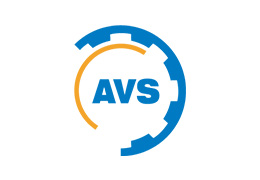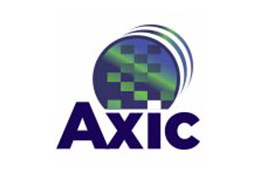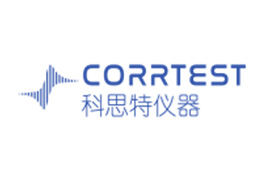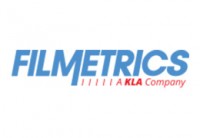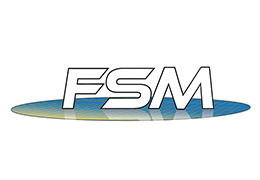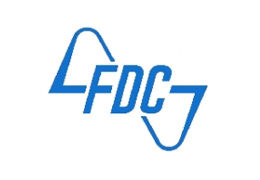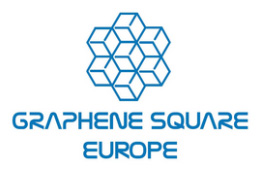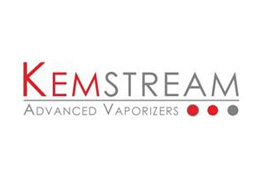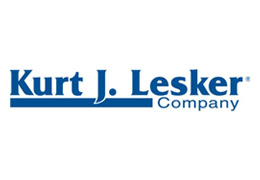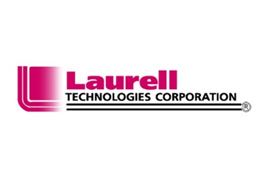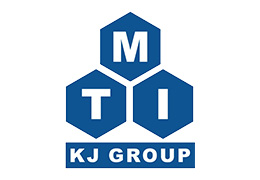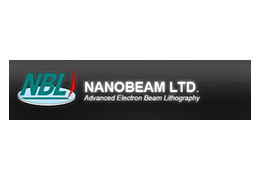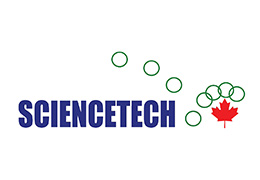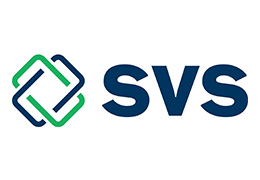Phone(+65) 6284 3818 | sales@premier-sols.com | Enquriy |
Epi100 Series Deposition Stages
Description
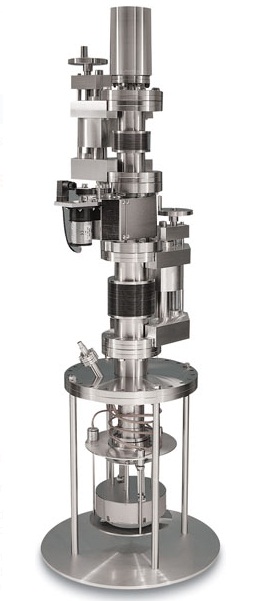
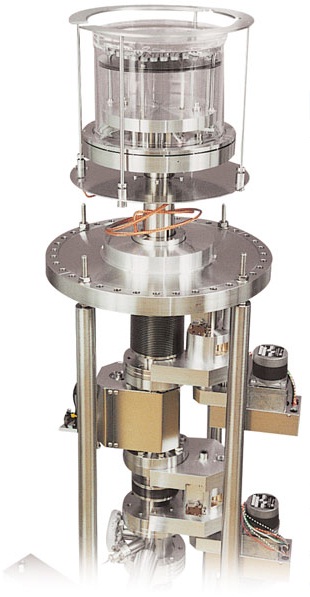
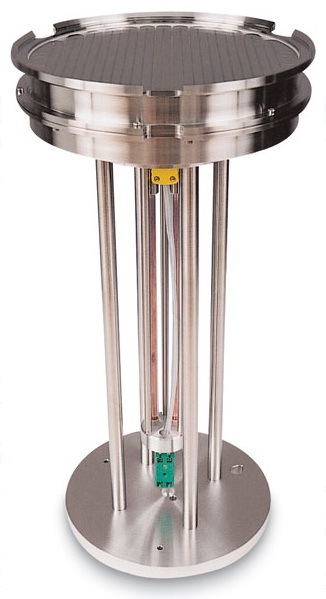
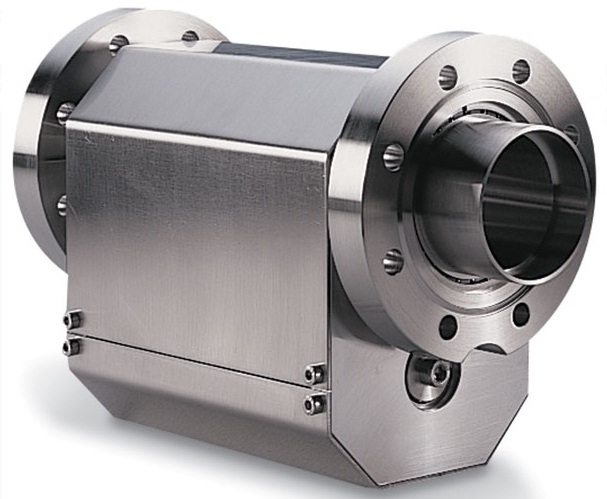
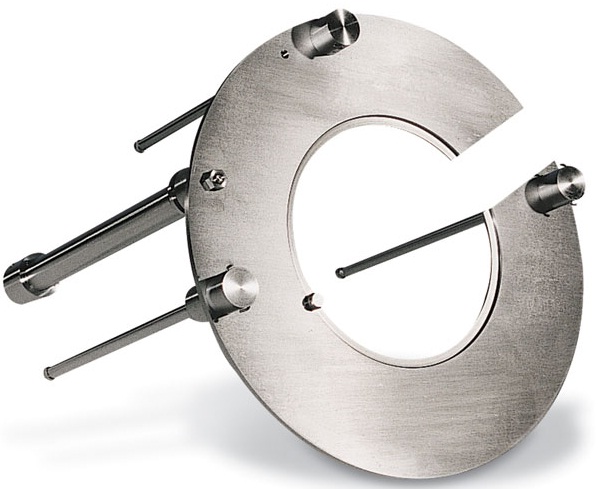
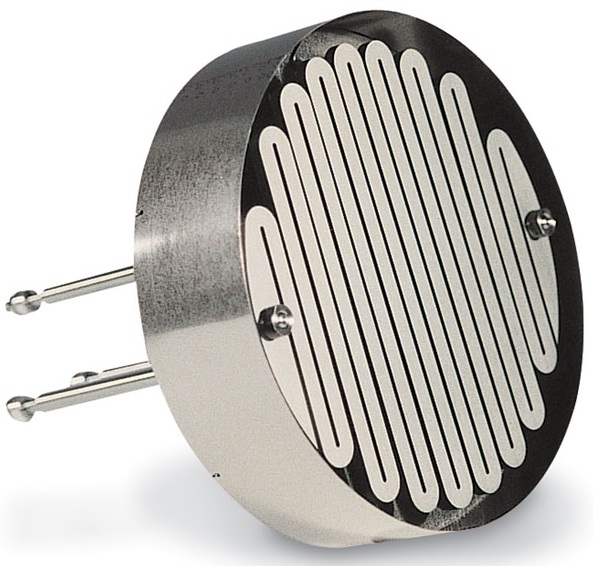
EpiCentre 100 UHV Manipulator Stages
Modular 'inline' stages offering heating, rotation, biasing, manipulating, and transferring of samples/substrates.
The Lesker EpiCentre range provides true UHV heating solutions for various deposition techniques such as MBE, sputtering, and CVD. The Lesker EpiCentre range can be mounted in any orientation and can also be configured for higher pressure and corrosive environments.
As each application demands differing capabilities, the Lesker EpiCentre 100 series was developed in a modular fashion, enabling users to select from a variety of modules to suit their specific needs. This modular design enables the 100 series to provide both sophisticated multi-axis control and simple hand-wheel-operated manipulation for cost-effective research and development applications.
Sample and Wafer Cradles
Cradle assemblies are custom designed to support standard wafers from 25mm through 200mm diameter and can also be configured for single or multiple sample holder platens. Refractory metal cradles such as Molybdenum or Tantalum have been fashioned to adapt to most common sample handling techniques.
Refractory Metal Heater Module
Lesker EpiCentre heater modules are capable of producing wafer temperatures up to 1200°C. By virtue of the exceptional coupling of heat to the wafer, the elements run at considerably lower temperature than conventional metal heaters. Clean UHV operation is ensured with the use of:
- Reduced element operating temperature
- Self-supporting element
- Insulator free hot zone
- Refractory metal enclosure construction
As standard, heater modules are available with two types of element, PgG and PBN coated graphite, though other options are available upon request.
In some cases conditions within the vacuum system will be detrimental to the lifetime and efficiency of the heating element, for instance systems that contain a high partial pressure of oxygen. In such cases heater elements can be enclosed within a quartz bell jar to separate the heater from the process gases. Please see below for more information on Quartz enclosures.
Thermocouple options
Selecting the correct thermocouple type is essential to avoid potential degradation, corrosion and process contamination. Two types of thermocouples are offered as standard, 'type C'(Tungsten/ Rhenium) and 'type K'(Chromel/Alumel), though other types are available upon request. Type C is non-magnetic, has a high temperature range and is generally more resistant to chemical attack. Type K is a more cost-effective solution, has a lower temperature capability, is magnetic, and tends to be more robust and durable.
Heater Elements
Two heater element variants are available as standard although special options are available on request.
PgG elements
Pyrolytic graphite coated Graphite (PgG) elements are the standard type used for the EpiCentre deposition stages. Robustness, reliability, high temperature capability, excellent uniformity, and cost are all aspects that make this element a desirable choice.
PBN elements
Pyrolytic Boron Nitride (PBN) elements are made from a grown PBN disc with a graphite film, etched into an element formation. This is then coated/sealed with a PBN layer to minimize exposure to the system. Two graphite areas remain exposed to the system to enable electrical contact. This design offers robust, long life, low-current heating.
Quartz enclosed heater modules for reactive processes
The Lesker EpiCentre 100 is available with a quartz-enclosed heater module that separates the heater and its services from the process environment.
This module is typically selected where:
- system cleanliness is absolutely critical
- corrosive gases are present in the application
- high partial pressures of oxygen are present
The system works by creating a separate environment for the heater module to operate within, thereby making the heater totally immune from the process gas. Heat is radiated from the element, through the quartz-enclosure, to the sample/wafer that is mounted on the cradle. As the heat must be radiated through the quartz, the attainable sample temperature is reduced to 1000°C.
The quartz enclosure seals against an internal water-cooled flange, creating the secondary vacuum enclosure. This quartz system is then separately pumped through the length of the EpiCentre stage via a port on the service collar. The heater module is then maintained at vacuum, without exposure to the process chamber. Vacuum pumps are not supplied.
MagiGear for continuous substrate rotation
The patented MagiGear offers a simple, robust and clean rotation system. This unique eccentric feedthrough transmits rotation through a solid vacuum enclosure to an internal torque tube with a massive 47 mm clear bore. This provides the access for power, cooling, thermocouple or even independent pumping of the heater module. The absence of gears and use of well-proven precision ball races ensures hydrocarbon free operation with negligible particulate generation. The MagiGear can be DC or stepper motorized and is fitted with a manual thumbwheel to allow positioning for sample transfer. Alternatively, a laser homing system is available for automated applications. The MagiGear is available in single, double and triple 'stack' configurations to match the substrate load requirements.
Laser Homing
The laser homing option enables the user to define an absolute reference or 'home position' to allow accurate and repeatable orientation of the cradle. This is typically used for automated sample hand off applications where the cradle needs to be aligned with a waiting transfer fork.
RF/DC Biasing Connection
Lesker EpiCentre stages can be provided with the facility to apply an electrical bias to control sample deposition characteristics. Two versions are available, one for 2kV DC isolation and one for DC / RF biasing up to 80 Watt power. In the case of RF biasing or high pressure applications, dark space shielding is also fitted to prevent unwanted parasitic plasma formation around the electrical path and other susceptible areas.
Substrate Shutters
Lesker EpiCentre stages can be fitted with rotary shutters to control line-of-sight between the substrate and the deposition source. Shutters are based upon the 'Rotary Source Shutter' range and are fitted with customized shaft and refractory metal blades to suit each application. Shutters can be actuated manually or pneumatically. In the case of the latter, reed switch assemblies can also be fitted to aid system interlocks.
Deposition Height Adjustment and Sample Transfer
The distance between the wafer cradle and the system mounting flange is usually specified by the customer to suit individual applications. An important feature in the Lesker EpiCentre 100 concept is the option to insert single or multiple Z shifts (Linear Shift Mechanisms) into the build to achieve varying levels of wafer manipulation as shown.
A single Z shift placed between the MagiGear rotary feedthrough and the system mounting flange will adjust the entire stage by moving both wafer cradle and heater along an axis normal to the substrate (Z axis). This is typically used to vary the deposition height.
By installing a single Z shift between the MagiGear rotary feedthrough and the heater module service collar the heater module may be retracted away from the wafer, hence providing a gap for manually transferring the sample.
By installing both Z shifts, the stage may be manipulated in a typical wafer handoff routine, as the heater may be retracted from the wafer to provide extraction space and the entire stage lifted or lowered to perform the wafer hand-off. These operations may be controlled manually or automated via motorization or pneumatically activated systems. A further option is the 'double Z-shift', which will simply move the wafer cradle with respect to a fixed heater position. This is often the choice selected for production applications.
Controllers & Power Supplies
A full range of temperature and motion controllers are offered for use with the Lesker EpiCentre series, please see details on their webpage in this section.
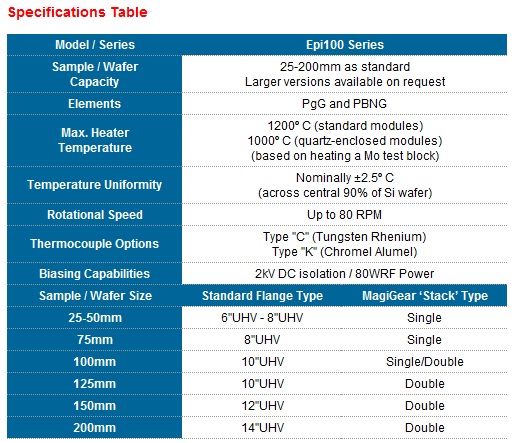
Lesker Epi100 Series Deposition Stages



